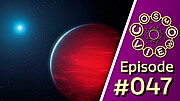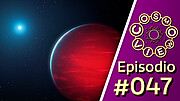A team of international experts, renowned
for debunking several black hole discoveries, have found a stellar-mass
black hole in the Large Magellanic Cloud, a neighbour galaxy to our
own. "For the first time, our team got together to report on a black
hole discovery, instead of rejecting one," says study leader Tomer
Shenar. Moreover, they found that the star that gave rise to the black
hole vanished without any sign of a powerful explosion. The discovery
was made thanks to six years of observations obtained with the European
Southern Observatory’s (ESO’s) Very Large Telescope (VLT).
“We identified a ‘needle in a haystack’,” says Shenar who started the study at KU Leuven in Belgium [1] and is now a Marie-Curie Fellow at Amsterdam University, the Netherlands. Though other similar black hole candidates have been proposed, the team claims this is the first ‘dormant’ stellar-mass black hole to be unambiguously detected outside our galaxy.
Stellar-mass black holes are formed when massive stars
reach the end of their lives and collapse under their own gravity. In a
binary, a system of two stars revolving around each other, this process
leaves behind a black hole in orbit with a luminous companion star. The
black hole is ‘dormant’ if it does not emit high levels of X-ray
radiation, which is how such black holes are typically detected. “It is incredible that we hardly know of any dormant black holes, given how common astronomers believe them to be”,
explains co-author Pablo Marchant of KU Leuven. The newly found black
hole is at least nine times the mass of our Sun, and orbits a hot, blue
star weighing 25 times the Sun’s mass.
Dormant black holes are particularly hard to spot since they do not interact much with their surroundings. “For more than two years now, we have been looking for such black-hole-binary systems,” says co-author Julia Bodensteiner, a research fellow at ESO in Germany. “I was very excited when I heard about VFTS 243, which in my opinion is the most convincing candidate reported to date.” [2]
To find VFTS 243, the collaboration searched nearly 1000
massive stars in the Tarantula Nebula region of the Large Magellanic
Cloud, looking for the ones that could have black holes as companions.
Identifying these companions as black holes is extremely difficult, as
so many alternative possibilities exist.
“As a researcher who has debunked potential black holes in recent years, I was extremely skeptical regarding this discovery,”
says Shenar. The skepticism was shared by co-author Kareem El-Badry of
the Center for Astrophysics | Harvard & Smithsonian in the USA, whom
Shenar calls the “black hole destroyer”. “When Tomer asked me to
double check his findings, I had my doubts. But I could not find a
plausible explanation for the data that did not involve a black hole,” explains El-Badry.
The discovery also allows the team a unique view into the
processes that accompany the formation of black holes. Astronomers
believe that a stellar-mass black hole forms as the core of a dying
massive star collapses, but it remains uncertain whether or not this is
accompanied by a powerful supernova explosion.
"The star that formed the black hole in VFTS 243 appears to have collapsed entirely, with no sign of a previous explosion," explains Shenar. "Evidence
for this ‘direct-collapse’ scenario has been emerging recently, but our
study arguably provides one of the most direct indications. This has
enormous implications for the origin of black-hole mergers in the
cosmos."
The black hole in VFTS 243 was found using six years of
observations of the Tarantula Nebula by the Fibre Large Array Multi
Element Spectrograph (FLAMES) instrument on ESO’s VLT [3].
Despite the nickname ‘black hole police’, the team actively encourages scrutiny, and hopes that their work, published today in Nature Astronomy,
will enable the discovery of other stellar-mass black holes orbiting
massive stars, thousands of which are predicted to exist in Milky Way
and in the Magellanic Clouds.
“Of course I expect others in the field to pore over our analysis carefully, and to try to cook up alternative models,” concludes El-Badry. “It's a very exciting project to be involved in.”
Notes
[1] The work was conducted in the team lead by Hugues Sana at KU Leuven’s Institute of Astronomy.
[2] A separate study led by Laurent Mahy, involving many of the same team members and accepted for publication in Astronomy & Astrophysics, reports on another promising stellar-mass black hole candidate, in the HD 130298 system in our own Milky Way galaxy.
[3] The observations used in the study cover about six years: they consist of data from the VLT FLAMES Tarantula Survey
(led by Chris Evans, United Kingdom Astronomy Technology Centre, STFC,
Royal Observatory, Edinburgh; now at the European Space Agency) obtained
from 2008 and 2009, and additional data from the Tarantula Massive Binary Monitoring programme (led by Hugues Sana, KU Leuven), obtained between 2012 and 2014.
More Information
This research was presented in a paper titled “An X-ray quiet black hole born with a negligible kick in a massive binary of the Large Magellanic Cloud” to appear in Nature Astronomy (doi: 10.1038/s41550-022-01730-y).
The research leading to these results has received funding from the European Research Council (ERC) under the European Union’s Horizon 2020 research and innovation programme (grant agreement numbers 772225: MULTIPLES) (PI: Sana).
The team is composed of T. Shenar (Institute of Astronomy, KU Leuven, Belgium [KU Leuven]; Anton Pannekoek Institute for Astronomy, University of Amsterdam, Amsterdam, the Netherlands [API]), H. Sana (KU Leuven), L. Mahy (Royal Observatory of Belgium, Brussels, Belgium), K. El-Badry (Center for Astrophysics | Harvard & Smithsonian, Cambridge, USA [CfA]; Harvard Society of Fellows, Cambridge, USA; Max Planck Institute for Astronomy, Heidelberg, Germany [MPIA]), P. Marchant (KU Leuven), N. Langer (Argelander-Institut für Astronomie der Universität Bonn, Germany, Max Planck Institute for Radio Astronomy, Bonn, Germany [MPIfR]), C. Hawcroft (KU Leuven), M. Fabry (KU Leuven), K. Sen (Argelander-Institut für Astronomie der Universität Bonn, Germany, MPIfR), L. A. Almeida (Universidade Federal do Rio Grande do Norte, Natal, Brazil; Universidade do Estado do Rio Grande do Norte, Mossoró, Brazil), M. Abdul-Masih (ESO, Santiago, Chile), J. Bodensteiner (ESO, Garching, Germany), P. Crowther (Department of Physics & Astronomy, University of Sheffield, UK), M. Gieles (ICREA, Barcelona, Spain; Institut de Ciències del Cosmos, Universitat de Barcelona, Barcelona, Spain), M. Gromadzki (Astronomical Observatory, University of Warsaw, Poland [Warsaw]), V. Henault-Brunet (Department of Astronomy and Physics, Saint Mary’s University, Halifax, Canada), A. Herrero (Instituto de Astrofísica de Canarias, Tenerife, Spain [IAC]; Departamento de Astrofísica, Universidad de La Laguna, Tenerife, Spain [IAC-ULL]), A. de Koter (KU Leuven, API), P. Iwanek (Warsaw), S. Kozłowski (Warsaw), D. J. Lennon (IAC, IAC-ULL), J. Maíz Apellániz (Centro de Astrobiología, CSIC-INTA, Madrid, Spain), P. Mróz (Warsaw), A. F. J. Moffat (Department of Physics and Institute for Research on Exoplanets, Université de Montréal, Canada), A. Picco (KU Leuven), P. Pietrukowicz (Warsaw), R. Poleski (Warsaw), K. Rybicki (Warsaw and Department of Particle Physics and Astrophysics, Weizmann Institute of Science, Israel), F. R. N. Schneider (Heidelberg Institute for Theoretical Studies, Heidelberg, Germany [HITS]; Astronomisches Rechen-Institut, Zentrum für Astronomie der Universität Heidelberg, Heidelberg, Germany), D. M. Skowron (Warsaw), J. Skowron (Warsaw), I. Soszyński (Warsaw), M. K. Szymański (Warsaw), S. Toonen (API), A. Udalski (Warsaw), K. Ulaczyk (Department of Physics, University of Warwick, UK), J. S. Vink (Armagh Observatory & Planetarium, UK), and M. Wrona (Warsaw).
The European Southern Observatory (ESO) enables scientists worldwide to discover the secrets of the Universe for the benefit of all. We design, build and operate world-class observatories on the ground — which astronomers use to tackle exciting questions and spread the fascination of astronomy — and promote international collaboration in astronomy. Established as an intergovernmental organisation in 1962, today ESO is supported by 16 Member States (Austria, Belgium, the Czech Republic, Denmark, France, Finland, Germany, Ireland, Italy, the Netherlands, Poland, Portugal, Spain, Sweden, Switzerland and the United Kingdom), along with the host state of Chile and with Australia as a Strategic Partner. ESO’s headquarters and its visitor centre and planetarium, the ESO Supernova, are located close to Munich in Germany, while the Chilean Atacama Desert, a marvellous place with unique conditions to observe the sky, hosts our telescopes. ESO operates three observing sites: La Silla, Paranal and Chajnantor. At Paranal, ESO operates the Very Large Telescope and its Very Large Telescope Interferometer, as well as two survey telescopes, VISTA working in the infrared and the visible-light VLT Survey Telescope. Also at Paranal ESO will host and operate the Cherenkov Telescope Array South, the world’s largest and most sensitive gamma-ray observatory. Together with international partners, ESO operates APEX and ALMA on Chajnantor, two facilities that observe the skies in the millimetre and submillimetre range. At Cerro Armazones, near Paranal, we are building “the world’s biggest eye on the sky” — ESO’s Extremely Large Telescope. From our offices in Santiago, Chile we support our operations in the country and engage with Chilean partners and society.
Links
Contacts
Tomer Shenar
KU Leuven and University of Amsterdam
Leuven and Amsterdam, Belgium and The Netherlands
Email: t.shenar@uva.nl
Julia Bodensteiner
European Southern Observatory
Garching bei München, Germany
Tel: +49-89-3200-6409
Email: julia.bodensteiner@eso.org
Kareem El-Badry
Center for Astrophysics | Harvard & Smithsonian
Cambridge, USA
Email: kareem.el-badry@cfa.harvard.edu
Pablo Marchant
KU Leuven
Leuven, Belgium
Tel: +32 16 33 05 47
Email: pablo.marchant@kuleuven.be
Hugues Sana
KU Leuven
Leuven, Belgium
Tel: +32 479 50 46 73
Email: hugues.sana@kuleuven.be
Bárbara Ferreira
ESO Media Manager
Garching bei München, Germany
Tel: +49 89 3200 6670
Cell: +49 151 241 664 00
Email: press@eso.org





























